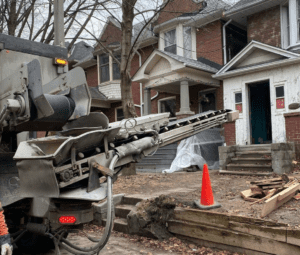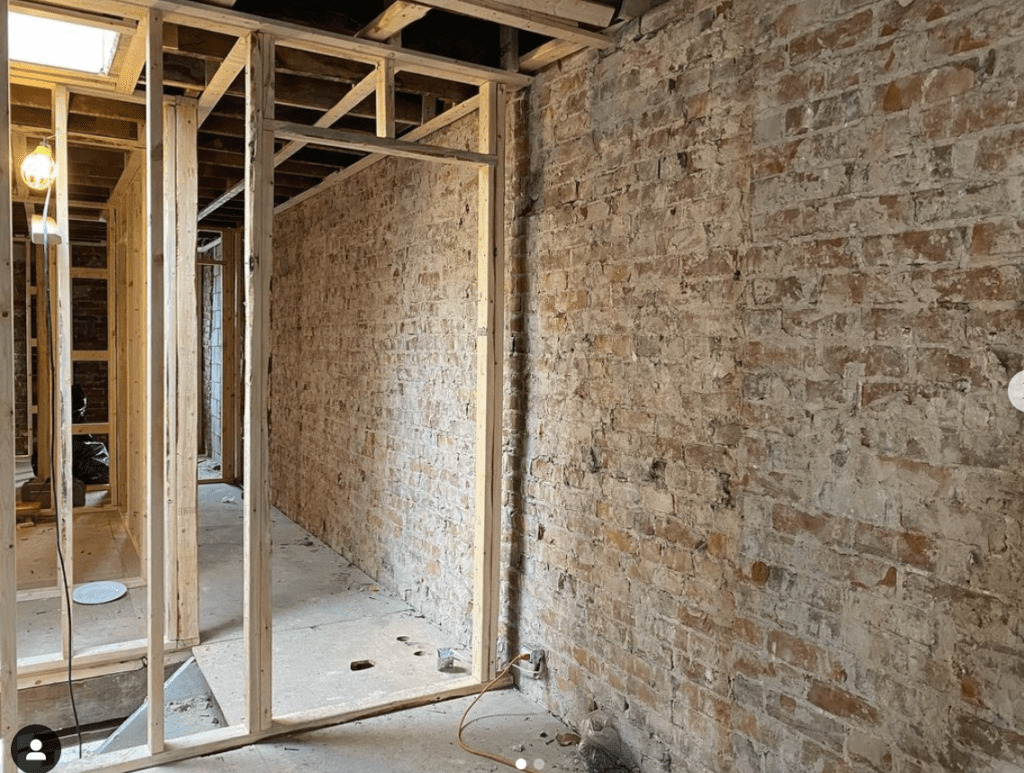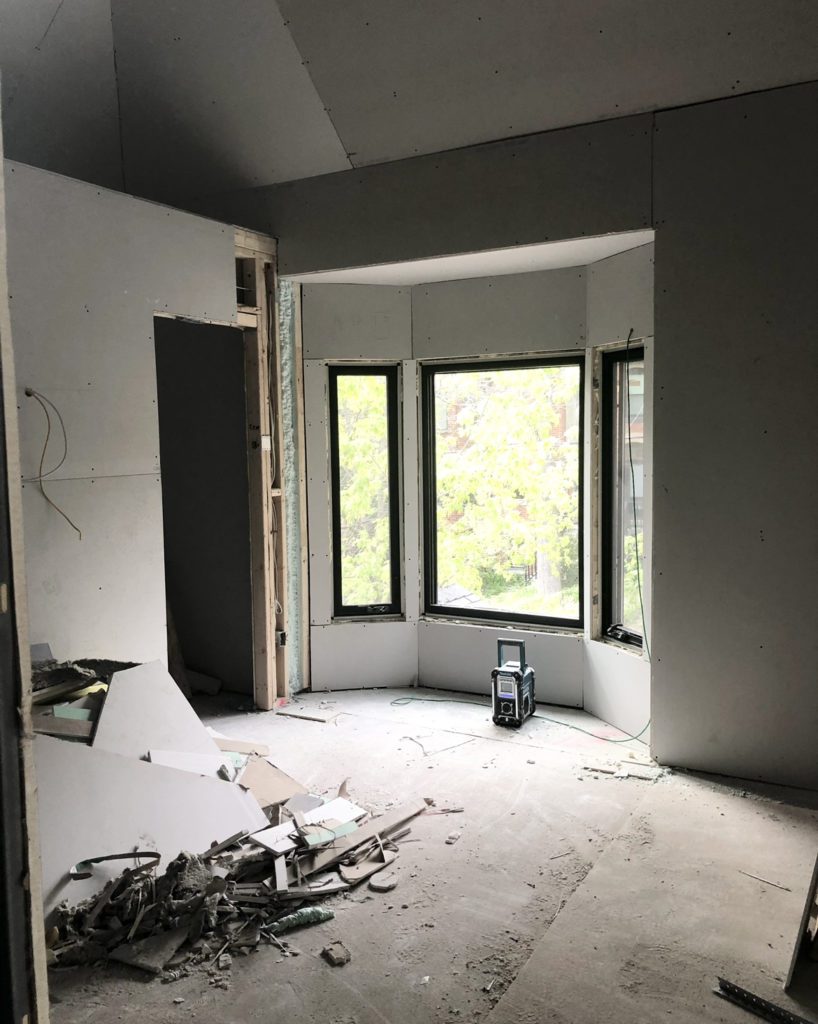Hi everyone! Danielle in the City back with Part 5 of our home renovation blog series! For all of you that don’t know me, I’m a Toronto realtor looking to help people live their dreams. For me, it’s all about learning who my clients are and helping them decide what best suits them. Whether it be the style of home, the neighbourhood or real estate goals! I have you covered. In this particular blog series, I am talking about home renovation and providing you a step by step journey.

My partner and I are on our third home renovation project. We are talking total gut jobs, so this journey is becoming a very familiar one. With that said, buckle up because today we will be discussing renovation budgets. Not the most fun part of the journey (unless you love numbers like me).
At this point in the home renovation process, we are guessing that you have an idea of what you want to accomplish and it’s time to figure out what you can afford. This step may seem daunting to some people, let us alleviate that feeling by planing and maintaining control of the renovation.
It is very important that you understand from early on in the project what your current financial position is. We would suggest contacting your bank and speaking to a financial adviser to discuss all of your options. I am no financial planner, but I wanted to give you an idea of the different types of financing options you have when undergoing a home renovation. If you are interested in getting more information, Arlene Karram from Safebridge Financial is part of our team and would love to help! Simply fill out the form on your right.
Save Your Money and Pay in Cash
 Yes I know…duh! The thing is, there are so many people that don’t have any type of budget setup. I have always been a numbers and money girl so this comes natural to me. Unfortunately for some people, they don’t realize that saving and budgeting can work on any salary/pay.
Yes I know…duh! The thing is, there are so many people that don’t have any type of budget setup. I have always been a numbers and money girl so this comes natural to me. Unfortunately for some people, they don’t realize that saving and budgeting can work on any salary/pay.
It’s time to look at your spending. Where can you cut and save? This pandemic has certainly forced many people into a savings plan due to lack of entertainment…but where else can you cut out some spending? My suggestion would be to setup a savings account and as soon as you receive a pay cheque, put away a consistent amount. If you set aside the money from the get go, you will be forced to alter your lifestyle (worst case scenario the money is there if you need it which is comforting).
Here is a list of tips and tricks to help save:
- Start cooking from home! If you eat out a lot you know how much money is spent on delivery and tipping. We understand the convenience; but cooking from home is an incredible money saver.
- Use Flipp when doing your groceries. This is an app that allows you to search any product and see where the best deal is on groceries.
- Check stores like Walmart or Dollerama for your beauty products (often half the price of Shoppers).
- Do you drink wine? Try bottling it yourself or finding a similar yet cheaper brand.
- Stop going on Amazon…do you really need it?
- Ask for a raise?! The squeaky hinge gets the oil.
- Sell things you don’t use anymore on Facebook Marketplace.
Simply altering the behaviour above can save your hundreds per month and remember that you should be tucking the money away as soon as you get paid!
Personal Loan or Line of Credit
Both a personal loan or line of credit allow you to borrow money and use for whatever you may chose. Borrowing via these options generally comes with a higher interest rate and we do suggest you consider these as your last option. If you select a loan, you are borrowing a lump sum of money and repay the money over a fixed period of time with interest. A line of credit is basically a revolving account that allows you to borrow money from this account, repay and redraw from the available amount with interest. To get an idea on the current interest rates, give your home bank branch a call.
Home Equity Loan or Home Equity Line of Credit
Many people don’t even know about this option or how easy it can be. If your home has gone up in value since you purchased it or if you have paid off a large portion of your mortgage, you may have equity available for your home renovation and the bank will loan this to you. Again, I am not in financing; however, I am going to do my best to explain these options.
Generally, a home equity loan gives you the ability to borrow 80-85% of the value of your home, minus what you owe on your mortgage. For example, if your home is worth $800,000, the balance of your mortgage sits at $500,000, given your bank allows you to borrow 85% of the value, $680,000 minus what is outstanding on your mortgage ($680,000 – $500,000), equaling $180,000 in this case. Since this is a loan, you would receive the money in a lump sum and pay back a set amount on a monthly basis over a set period of time based on an interest rate provided by the bank. To put it in laymen’s terms, it is similar to a second mortgage.
A home equity line of credit (HELOC) allows you to borrow a set amount of money for the lifespan of the loan. The home equity line of credit similar to the home loan, generally allows you to borrow 80-85% of the value of your home, minus what you owe on your mortgage. See example above. The difference here is that the line of credit is treated more like a credit card. You will only make payments on your HELOC once you use/owe money on the line of credit. At the least, you will need to make monthly payments to cover the interest (again, similar to a credit card).
To sum it up, your home loan will likely have an amortization period similar to a mortgage, where as your HELOC (in Canada) doesn’t.
For more financial help, feel free to contact our friends at Safebridge Financial and speak with Arlene about your options!
Refinancing Your Mortgage
Refinancing a mortgage is the process of taking out a new mortgage/loan to pay off your original mortgage/loan. Often, homeowners do this to take advantage of a lower interest rate, cash out some of their equity or to reduce monthly payments with an increased repayment term.
Refinancing your mortgage is similar to getting a mortgage in general. First step, call around and seek out the best rate you can find! You will need to decide between variable and fixed interest rates along with how long you want to lock in for. In most cases, if your credit has improved you have a great chance at qualifying for a lower interest rate. For those of you that are new to this, mortgage rates at the moment are at an all time low!
One thing you have to consider when refinancing your mortgage verses applying for a mortgage is penalties on your current mortgage. If you are breaking your current mortgage terms, you will need to pay a fee to do so. Discuss these terms with a bank or a lender to determine if the fee to break the mortgage and refinance is worth the equity that you are able to take out on your home.
Residential Construction Mortgage or Loan
Unlike a standard mortgage, a construction loan gives the borrower the money they need to complete the construction project. A construction mortgage allows you to access the money at predetermined stages of the construction project. This means the mortgage is given to you in stages as the project is completed, also known as ‘draws’. I have never used this type of mortgage. If you would like information on this type of loan, please contact Arlene at Safebridge Financial.
Now that we have discussed the different types of ways to borrow money, I am sure you are really anxious to determine the actual cost of your renovation project. Unfortunately, that is one that can only be completed by getting quotes! We will talk more about that on our next renovation blog.
If you have any questions, please give your favourite Toronto Realtor a call at 416-728-5401!



